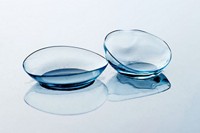Advertisement
Grab your lab coat. Let's get started
Welcome!
Welcome!
Create an account below to get 6 C&EN articles per month, receive newsletters and more - all free.
It seems this is your first time logging in online. Please enter the following information to continue.
As an ACS member you automatically get access to this site. All we need is few more details to create your reading experience.
Not you? Sign in with a different account.
Not you? Sign in with a different account.
ERROR 1
ERROR 1
ERROR 2
ERROR 2
ERROR 2
ERROR 2
ERROR 2
Password and Confirm password must match.
If you have an ACS member number, please enter it here so we can link this account to your membership. (optional)
ERROR 2
ACS values your privacy. By submitting your information, you are gaining access to C&EN and subscribing to our weekly newsletter. We use the information you provide to make your reading experience better, and we will never sell your data to third party members.
Environment
Clothing Sheds Microplastics Into Sea
Water Pollution: Washing synthetic fabrics may be a major source of plastic particles in the oceans
by Naomi Lubick
October 11, 2011

Washing a fleece jacket may add to the fog of microscopic plastic floating in the oceans, according to a new study. Researchers report that the majority of these plastic particles probably washed off synthetic fabrics (Env. Sci. Technol., DOI: 10.1021/es201811s).
Although stories of large chunks of plastic trash trapped in the guts of seabirds are devastating, most plastic pollution in the oceans takes the form of tiny, even microscopic, fragments. In the 1990s, researchers started tracking the amounts of these particles and searching for possible sources, such as the plastic beads used as scrubbing agents in face cleaners and soaps.
As part of that search, researchers led by Mark Anthony Browne of University College Dublin, decided to study so-called microplastics collected on shores near wastewater treatment plants to see whether the particles come from household products. The team collected samples of microplastics at 18 coastal sites, including sandy beaches in the U.K., Chile, and Dubai. They found that in more densely populated regions, more plastic bits washed out when they sifted through the sediments, Browne says.
The particles’ shapes and sizes indicated they were fibers of synthetic fabrics. The researchers used Fourier transform infrared spectroscopy to determine the fibers’ chemical composition. They found that polyester made up about three-quarters of the plastics; the rest consisted of polyamide, polypropylene, and acrylic, a composition that matches that of textiles.
The spectroscopy data led the team to think of washing clothes. So the researchers analyzed the water drained from frontloading washing machines after throwing fleece jackets, blankets, and synthetic business shirts into them. In one wash cycle, they found, a single piece of clothing shed more than 1,900 tiny fibers.
The scientists also determined that the chemical composition of their coastal plastic samples matched that of microscopic plastic found in treated discharge they collected from two wastewater treatment plants in Australia. Browne and his team concluded that plastic fragments from synthetic fabrics most likely flow from wastewater treatment plants down to the seashore, and perhaps out to sea.
Kara Lavender Law, a researcher at the Sea Education Association, a nonprofit organization, applauds the researchers’ detective work to pinpoint a possible source of microplastics. She points out that spectroscopy data alone aren’t a definitive way to pin down a plastic particle’s source, so the researchers’ analysis of particle shapes was crucial.
But Law says the big question about microplastics remains: Do animals that ingest these particles actually experience harm, either from the physical harm of swallowing fibers or from the toxicity of compounds in the plastics?





Join the conversation
Contact the reporter
Submit a Letter to the Editor for publication
Engage with us on Twitter